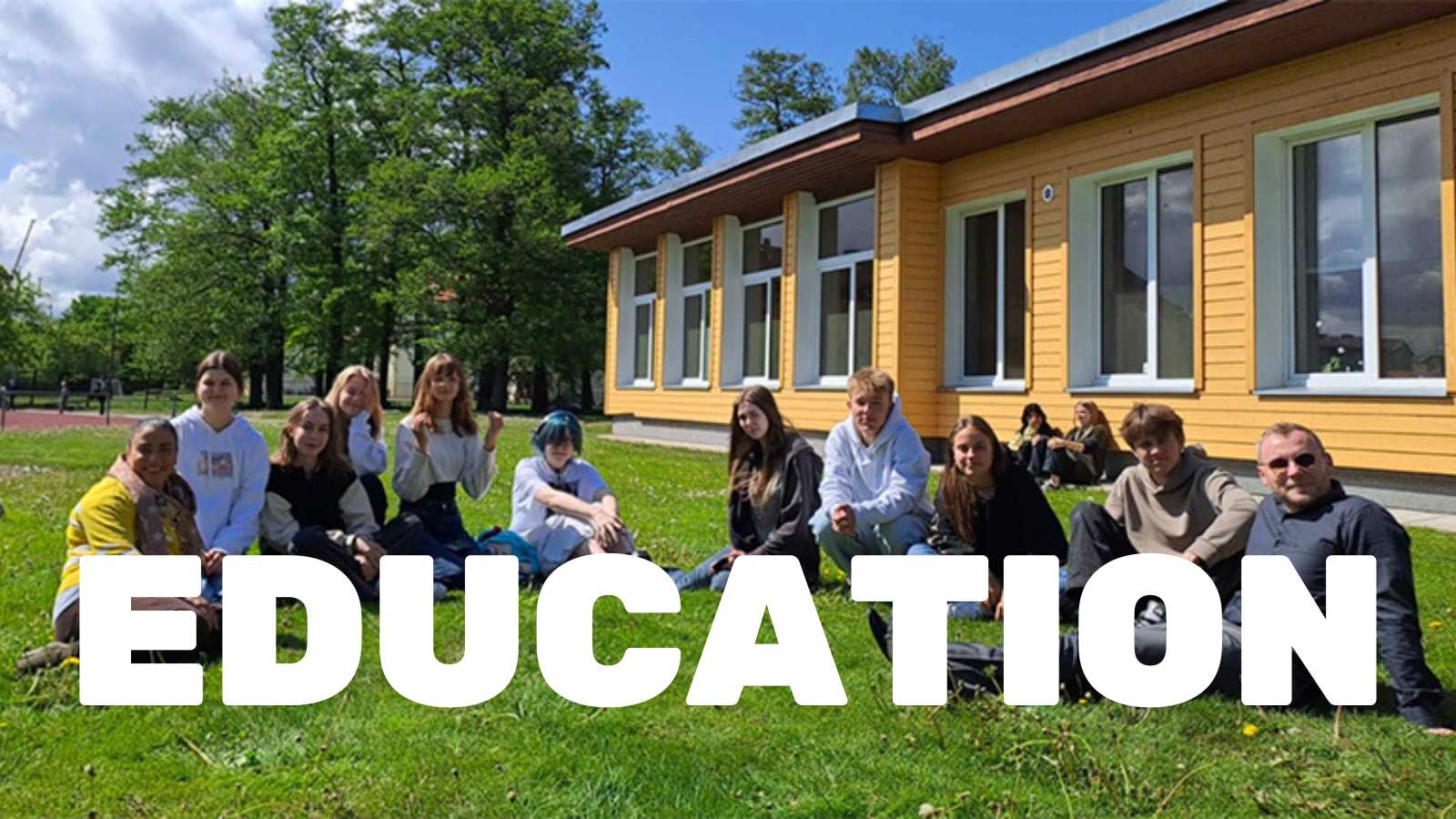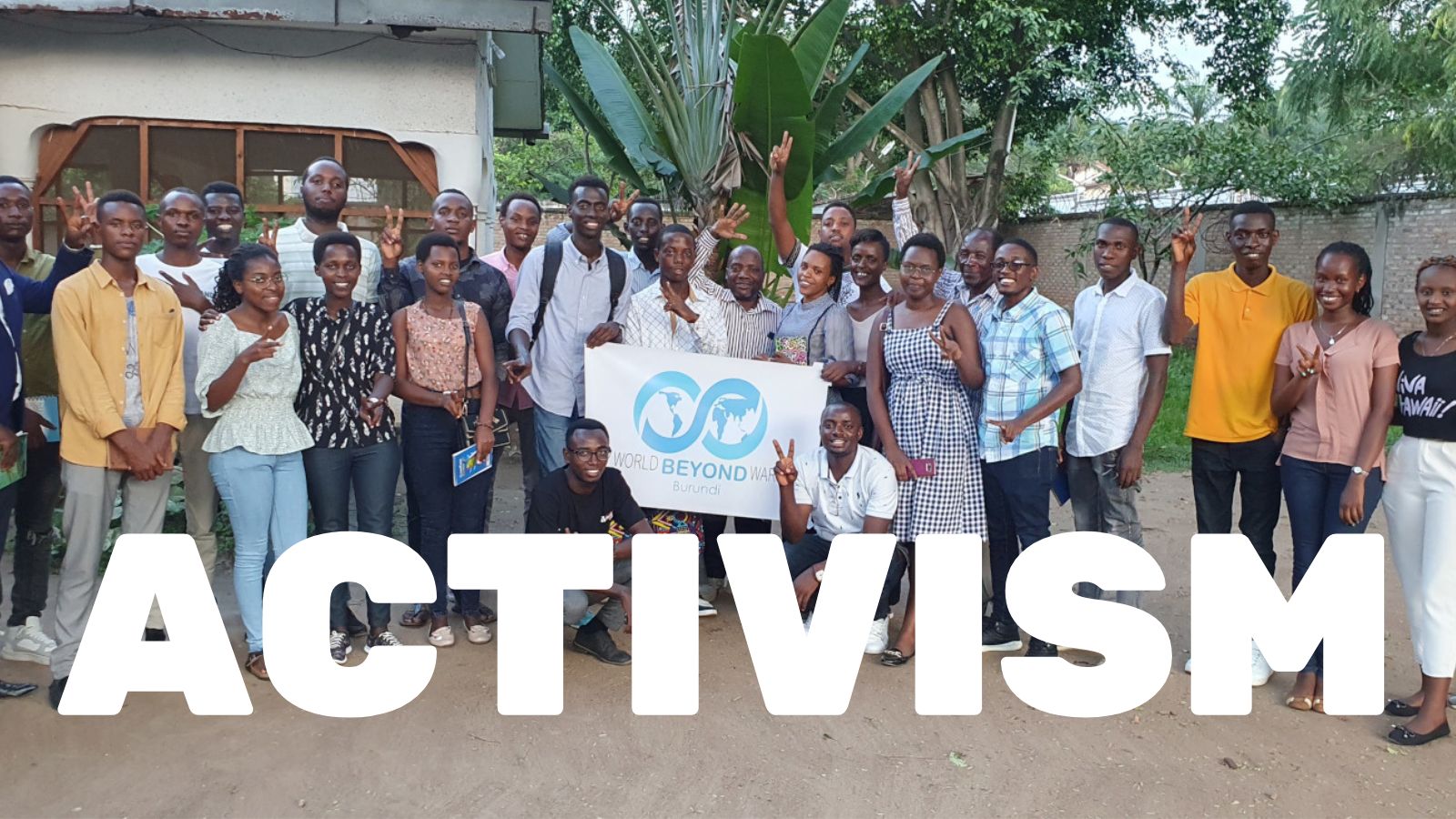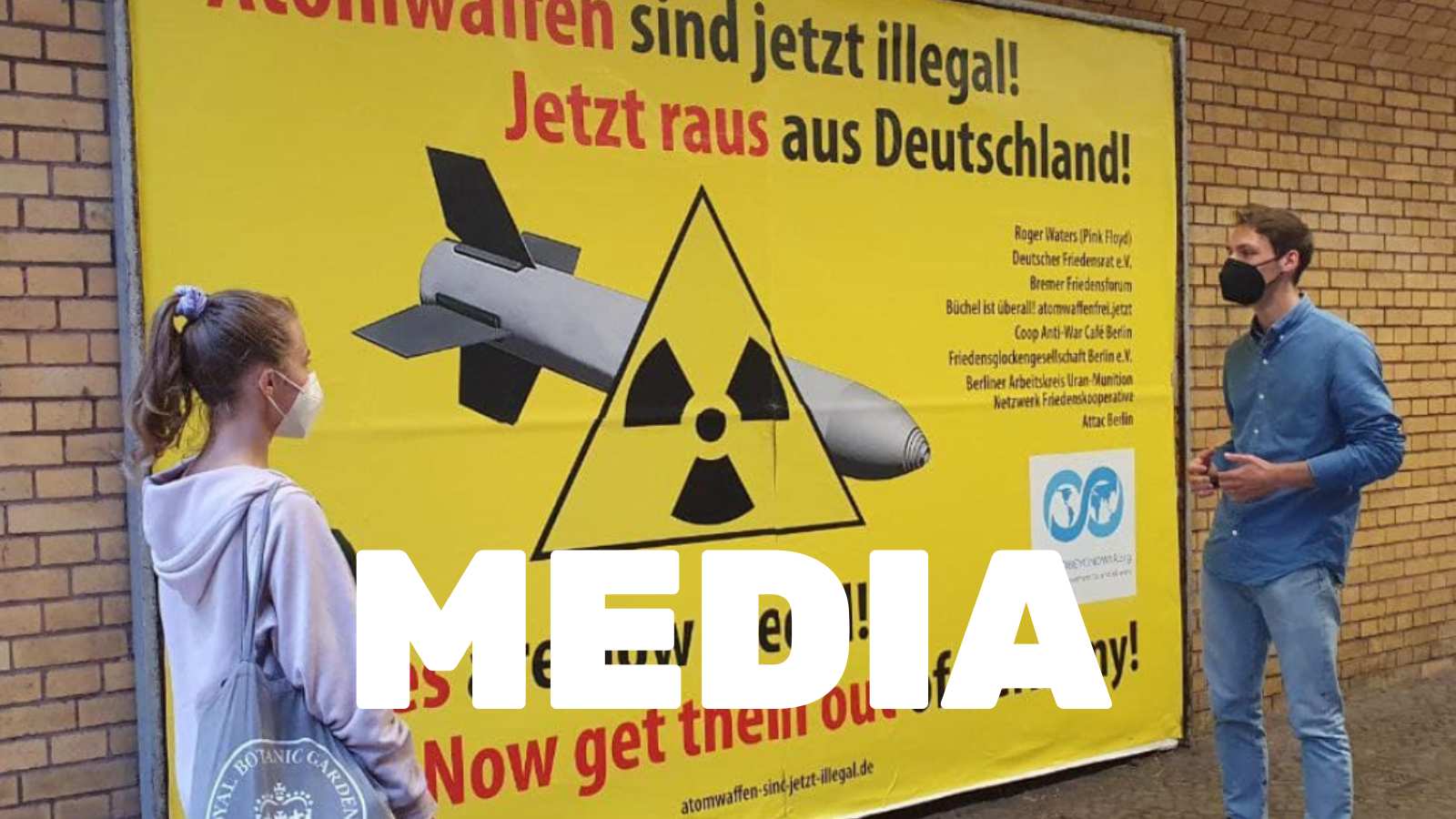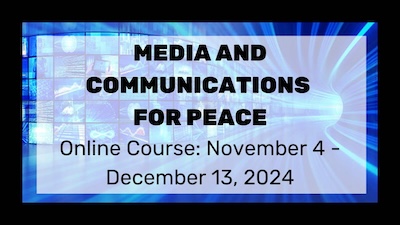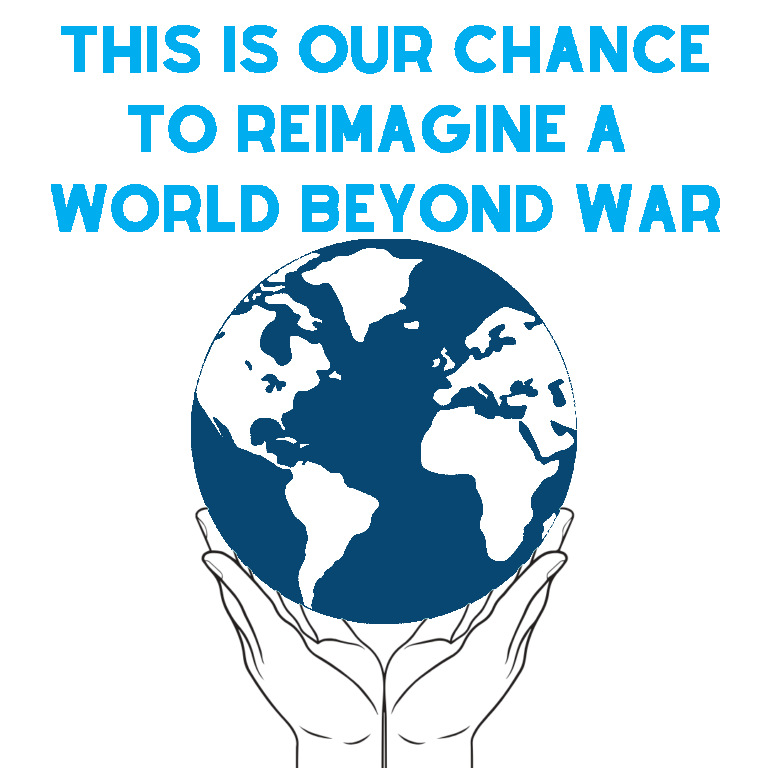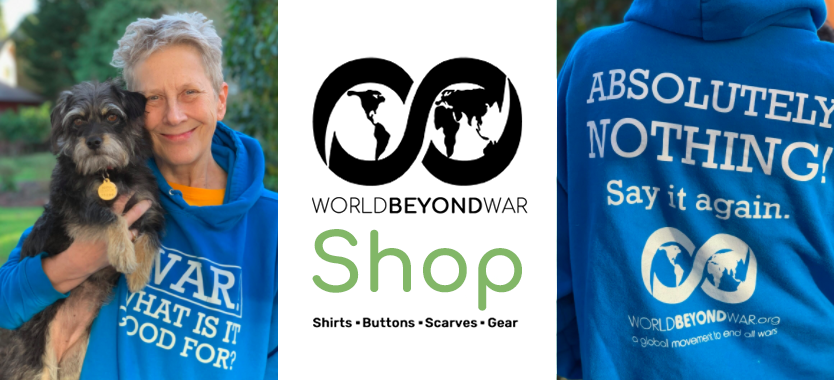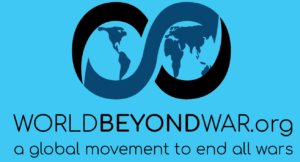By Joseph Essertier, World BEYOND War, August 18, 2020
On Saturday, 8/8/2020, citizens of Nagoya and activists of Japan for a World BEYOND War gathered for a “Candlelight Action” to commemorate the 1945 U.S. bombing of Hiroshima and Nagasaki. All told, there were about 40 people who braved the summer heat that day, to stand on a street corner in Sakae, the central shopping district of Nagoya, in the midst of the SARS-CoV-2 crisis, to make a political statement about an atrocity committed in August 1945, and about the future of our species Homo sapiens. We did this as Nagoya’s contribution to the “Peace Wave” that moved across the world between the 6th and the 9th of August. As part of the Peace Wave, people gathered in hundreds of cities to pause and reflect on humanity’s present predicament.
Led by Bully Nation Number One, a number of countries continue the pathological development and stockpiling of ever-more-deadly nuclear bombs, even today, 75 years after Harry S. Truman actually dropped two of them on major cities in Japan. The following is my brief report about what we did that day.
First, I thanked people for gathering in the midst of the high heat and humidity, when there is a risk of being infected by SARS-CoV-2. A few days before our Candlelight Action a state of emergency was declared in Aichi Prefecture, which is a province that includes Nagoya, Japan’s fourth largest city. Nevertheless, many of us concluded that learning from humanity’s previous mistakes and reducing the chances of nuclear war was a higher priority than avoiding infection, and we accepted the risk to our own health.
After my introductory speech (see below), we stopped for 1 minute of silence to remember those whose lives were shortened as a result of Truman’s violence on the 6th of August in Hiroshima and the 9th of August in Nagasaki, i.e., the lives of the hibakusha (A-bomb victims). Many of us have personally known hibakusha or once spoken to a hibakusha, and still remember their faces and their moving words.
Making everyone, including some passersby who stopped to see what we were doing and to listen, aware that our action on this hot, humid day was part of the Peace Wave was one of our priorities, and we used a portable digital projector to show video on a white screen that we made ourselves. This was not the first time that we have shown video on a sidewalk in Nagoya—an effective way to attract the attention of pedestrians and drivers.
One frequent participant in our street protests, or “standings” as they are referred to in Japanese (borrowing the English word), played his flute and help set the solemn mood that we needed. How does one fathom or make sense of the burning of children into charcoal, the sight of monster-like souls stumbling down a street with skin hanging from their arms and hands, or the memory of a person whose shadow was permanently etched into concrete by the blinding flash of the Bomb?
Mr. Kambe, the man who kindly agreed to temporarily replace me as the Coordinator of Japan for a World BEYOND War, played his guitar while a woman sang a song about home, reminding us of the hundreds of thousands who lost their homes as a result of just those two bombs, not to mention the millions who became homeless as a result of the Fifteen Years War (1931-45). This duo regularly contributes to concerts against new bases in Okinawa; and soothes, heals, and inspires beginners and seasoned activists alike, singing songs with messages of internationalist solidarity and a commitment to world peace.
KONDO Makoto, professor emeritus of Gifu University and a scholar of constitutional law, told us about the meaning of Article 9 in the Constitution of Japan. He noted that Japan’s “peace constitution” was partially the result of the bombings of Hiroshima and Nagasaki, and warned that the next time humanity engages in a world war, it could mean the actual extinction of our species.
The poet ISAMU (whose name is always written in all caps) recited an antiwar poem he wrote. It is entitled “Origami: Praying for peace” (Origami: Heiwa wo inotte). I will not attempt to translate it, but it begins with a sense of anger and bewilderment: “Why do they do this? Why do they make something like this? Why do they make missiles? Why do they launch missiles?” It suggests that we spend our time and energy having fun instead of attacking each other. It demands that we think. And it ends by asking how much more fun it would be if we spent all that money tied up in weapons budgets on food instead, and if everyone sat down and enjoyed meals together. With the fresh insight of a child, this impressive poem, I felt, opens our eyes to the obvious stupidity of war in general and of nukes in particular.
Mr. Kambe sang a song that thoroughly rejects war. One of its core messages is that no matter what they say to us, we will not join in on the bloodshed. Ms. Nimura is in the background in the black shirt holding a handmade origami paper crane. Paper cranes are often used to remember the bombings of Hiroshima and Nagasaki, and are an appeal to all of us to diligently work for peace in whatever capacity we are able. In my opinion, as citizens of the perpetrator nation, we Americans above all must pay attention to these paper cranes and heed this demand to make a sincere effort, so that we can heal the wounds caused by our government’s wars and build security for future generations. Although Ms. Nimura did not speak on this day, she generously shared her time, energy, ideas, and creativity with us. Once again, I was moved by her sincere devotion to the cause of peace and by her deep understanding of the work of an organizer, i.e., how one actually goes about building peace.
Ms. Minemura, a representative of the Aichi Chapter of Gensuikyo, gave us a speech. As she said, this was her first time to participate in a Candlelight Action event organized by Japan for a World BEYOND War. She said she was happy to experience this warm gathering and feel our passion. Gensuikyo has been working for many decades to abolish nuclear weapons. She explained the significance of the Peace Wave against nukes and for peace, and that these two bombs in 1945 worsened poverty and discrimination among countless people in these two cities, Hiroshima and Nagasaki, and caused trouble for the descendants of hibakusha.
That day, out of concern for the health and safety of the participants, our gathering was relatively short, but I will take the liberty of adding here that tens of thousands of Koreans were killed, too, and we can be sure that there are people suffering even now in North and South Korea today, just as in Japan. In fact, they may be suffering more since the memorialization of what happened to Koreans in the two cities was delayed for years and decades. And Gensuikyo has recognized Koreans, who were victims of both American and Japanese violence. They were exploited by the colonialism and hurt by the violence of the Empire of Japan.
On a hot day of August 2019 in an auditorium in Nagasaki, for example, a Korean hibakusha gave a moving, tear-filled speech in front of thousands of people. This was at the invitation of Gensuikyo, as I understand it. I was there in the huge hall in Nagasaki, and was moved by his speech, as he gave examples of how so many Koreans who returned to their homeland had to suffer in silence, and told us about what it meant for people, for several decades, to receive no official recognition or support from their government or from the government of Japan. The wounds were still very fresh for him that day, 74 years after the Bombs were dropped on these Japanese cities hurting him and killing other Koreans, allies of the U.S. at the time. Many Koreans were brought to Japan as forced laborers and their remains are still being repatriated. (For instance, there is a short, moving video included in this article at the Asia-Pacific Journal: Japan Focus).
At the end of this event that lasted a little less than an hour, Mr. Kambe led us in singing “We Shall Overcome.” Everyone swung the candle that they were holding in the air from side to side to the rhythm of the music. Although my heart was heavy at the beginning of the event, it was encouraging to see so many people, even some passersby who stopped at the beginning, and watched and listened and participated, actively take time out of their busy lives on a hot day of a stressful summer, to remember what happened and think about the need to abolish nuclear weapons and war.
Below follows the speech that I originally wanted to give—on the actual day I shortened it in the interest of time—with the original Japanese and my English “translation”. (And the English translation is from an earlier draft, so it is a little different from the Japanese speech).
Joseph Essertier on the occasion of the 75th anniversary of the bombing of Hiroshima and Nagasaki, 8 August 2020, Sakae, Nagoya City, Japan
哲学者と反戦活動家のバートランド・ラッセルは、1959年に核軍縮キャンペーン(CND)の演説を行った時に、次のように述べています。「忘れないでください: 戦争の習慣を止めることができない限り、科学者と技術者はどんどん酷いテクノロジーを発明し続けます。生物兵器戦争、化学兵器戦争、現在のものよりも破壊力のある水爆を開発することになるでしょう。この人間の相互破壊性(殺し合う癖)を終了させる方法を見つけられない限り、人類の未来には、ほとんど希望はありません。ほとんどありません。我々は新しい考え方と新しい感じ方が必要です。
この日、私たちは、米軍が75年前に広島と長崎で日本人、韓国人、その他の人々に対して行った残虐行為を思い出すために、一緒にここでスタンディングしています。私たちはこういうのを「キャンドルライト・アクション」と呼んでいます。これは、6日から9日の間に世界の各地で行われる「ピース・ウェーブ」(平和の波)の一部です。
キャンドルは死者を偲ぶためによく使われますが、私たちが手にしているこのキャンドルは、たった2つの爆弾によって消えた数十万人の命を象徴しているのです! 数十万人の心の中の炎は、原爆死者たちの未来の社会改革運動、彼らの未来の仕事や社会への貢献、未来の愛、様々な美しい未来の計画を含んでいたに違いありません。アメリカ人、特にハリー・S・トルーマン大統領は、恐ろしいほど非人道的で不必要な方法で、彼らの人生を終わらせてしまったのですから、彼らはその未来の幸せを味わうことはできなくなったでしょう。
また、生き残った何百万人もの日本人や朝鮮人、特に被爆者の命も忘れてはなりません。被爆者について少し勉強した私たちは、彼らの多くが不健康に苦しんでいたことを知っています。そして、2020年の今日、彼らはPTSDによる精神的苦痛を受けていたに違いないことを私たちは知っています。被爆者だけではなくて、大切な家族や友人を失った何百万人もの日本人や韓国人もいました。
なぜアメリカ人はこんなことをしたのか?どうしてこんなことになってしまったのか?そして最も重要なことは、この恐ろしい暴力からどのように学び、再び起こらないようにを防ぎ、世界初めての核戦争を防ぐためにはどうすればよいのでしょうか。これらは、平和を愛する私たちが直面している重要な問題のいくつかです。
ホモ・サピエンスが集団自決する可能性は、「終末時計」を設定した科学者によれば、これまで以上に高くなっています。それは我々がグランドキャニオンの端に立っているようなものですが、下の水の川の代わりに、我々は火の川を見ています。そう、地球上の地獄です。恐ろしいです。ほとんどの人は顔をそっちに向かないで、他の方面を見るのは不思議ではありませんね。彼らは、私たちがグランドキャニオンの日の川に落ちようとしていることを無視したがっています。しかし、今日ここで立っている私たちは、目を背けません。私たちはその火を見て、考えています。
これらのキャンドルは、今日の私にとって、人類が核のホロコーストで燃えてしまう、そういったイメージの火を象徴しています。
残念ながら、ゴルバチョフのような責任を持っている人は、エリート政治家の間では稀な存在です。今日、私と一緒にここに立っている皆さんのほとんどは、すでにこのことを知っています。なぜなら、皆さんは安倍政権下で、アメリカ人殺し屋の次の発射台である辺野古新基地建設を阻止するために頑張ってきたからです。私たちホモサピエンスの種が生き残り、我々の子孫がノビノビする、まともな未来を手に入れる唯一の方法は、私たち民衆が立ち上がって狂気を止めることだということを、ここで立っていらっしゃる皆さまも知っていると思います。特に、安倍総理のような狂った人々、特に戦争へと私たちを突き動かし続けるオバマやトランプのような人々の暴力を止めなければなりません。言い換えれば、私たちは民主主義(民衆の力)を必要としているのです。
これらのキャンドルはまた、韓国の「ろうそく革命」のような革命の可能性を思い出させてくれます。しかし、私たちワールド・ビヨンド・ウォーは、一国での革命ではなく、バートランド・ラッセルが言ったように、戦争の習慣を止めるという一つの目標を目指した世界的な革命を考えています。それは不可能に聞こえるかもしれませんが、ジョン・レノンが歌ったように、「私は夢想家だと言われても、私だけではないと答えます」。
私たちは75年前の8月6日と9日に起こったことを忘れてはいません。我々は太平洋戦争を忘れていませんし、最近の多くの大きな戦争(だいたいイジメの米軍がかかわる戦争)も忘れていません。私たちは今、人生の中から一分間の沈黙の時間をとり、被爆者が私たちに語ったことを思い出して、人類が戦争を乗り越えられるように、心の中で誓いを立てようではありませんか。
As Bertrand Russell said in 1959 for the Campaign for Nuclear Disarmament (CND), “You’ve got to remember that unless we can stop the habit of war, scientific skill will go on inventing worse and worse things. You will have bacteriological war, chemical war, you will have H-bombs more destructive than those we have now. And there is very little hope, very little hope, for the future of the human race unless we can manage to find some way of putting an end to this mutual destructiveness… We need new ways of thinking and new ways of feeling.”
On this day, the 8th of August, we stand here together to remember the atrocity that the U.S. military committed against Japanese, Koreans, and others in Hiroshima and Nagasaki 75 years ago. We call our action today a “candlelight action.” It is part of a “Peace Wave” that is flowing across the world between the 6th and the 9th.
Candles are often used to remember the dead, and these candles that we hold in our hands symbolize the several hundreds of thousands of lives that were extinguished by just two bombs! The burning flames in the hearts of those hundreds of thousands—imagine 10 baseball stadiums filled with people—must have included the future social justice campaigns, the future work and contributions to society, the future love they would express, and various beautiful future plans. They would never taste any of that future happiness because Americans, in particular President Harry S. Truman, brought their lives to an end, in a terrifying and inhumane and senseless way.
One must also not forget the lives of the millions of Japanese and Koreans who survived, especially the hibakusha. We who have studied a little about the hibakusha know that many of them suffered poor health. And today in 2020, we know that they must have undergone mental suffering from PTSD. Beyond the hibakusha, there were the millions of Japanese and Koreans who lost precious family and friends.
Why did Americans do this? How did this happen? And most importantly, how can we learn from this horrific violence, prevent it from happening again, and prevent the world’s first nuclear war? These are some of the important questions that we, who love peace, face.
The chance of Homo sapiens killing itself—species suicide—is now greater than ever according to the scientists who set the “Doomsday Clock.” It is like we are standing on the edge of the Grand Canyon but, instead of a river of water below, we see a river of fire. Yes, hell on Earth. It is so terrifying. No wonder most people turn their heads away and look elsewhere. They do not want to see the fire that we are all about to fall into. In that sense, these candles could symbolize the fires that would burn in a nuclear holocaust.
Unfortunately, socially-responsible people like Gorbachev are rare among elite politicians. Most of you who stand here today with me already know this because you have struggled with the administration of Prime Minister Abe Shinzo to stop the construction of the next launch pad for American killers, the new Henoko base construction. I think everyone here knows that the only way our species can survive and have a decent future is if we the people stand up and stop the madness, specifically by stopping the crazy people like Abe, and especially Trump, who keep pushing us toward war. In other words, we need democracy—the power of the people.
These candles also remind us of the possibility of a revolution, like the candlelight revolution of South Korea. But instead of a revolution in one country, we at World BEYOND War envision a global revolution aimed at one goal—stopping the habit of war, exactly as Bertrand Russell said we must do. It might sound impossible, but as John Lennon sang, “You may say I’m a dreamer, but I’m not the only one.”
We who stand here have not forgotten what happened 75 years ago on the 6th and 9th of August. We have not forgotten the Pacific War and many other recent big wars, most of them caused by the United States. We will now take one minute out of our lives for a moment of silence to recall what the Hibakusha told us, and to make a commitment in our hearts, to help humanity get beyond war.


